Starlink Monthly Report - March 2023Another month has gone by. Time to update the Starlink monthly report.
This report is available in German and English.
Link to the German version:
https://forum.raumfahrer.net/index.php?topic=13231.msg546911#msg546911
OverviewStarlink currently consists of ~4200 satellites, of which ~3200 are operational and ~270 have already deorbit. There are currently 6 operational orbits:
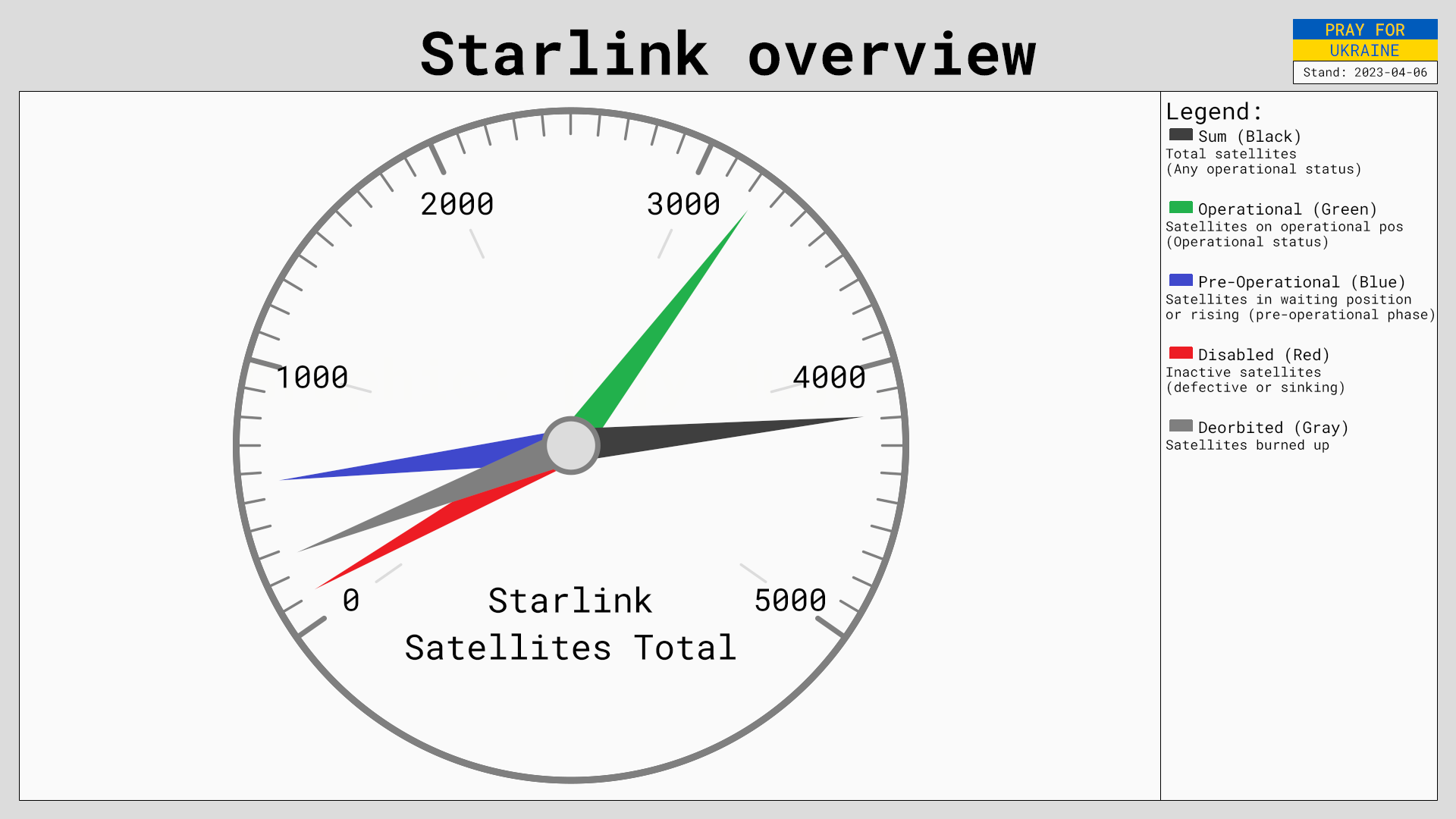
Highlight: Operating orbit 2The operational orbit 2 was rebuilt in March. The satellites left their 14 positions per plane and took up new positions in a grid for 16 satellites per plane.
(Graphics are only available in German)
Highlight: Change from operating orbit 4 to 1Some satellites are in the process of changing their inclination. Since the beginning of March, about 1/20° inclination has been removed. This will cause the satellites to leave operational orbit 4 and move to operational orbit 1. This process will take approximately 4-6 months. The following is an example:
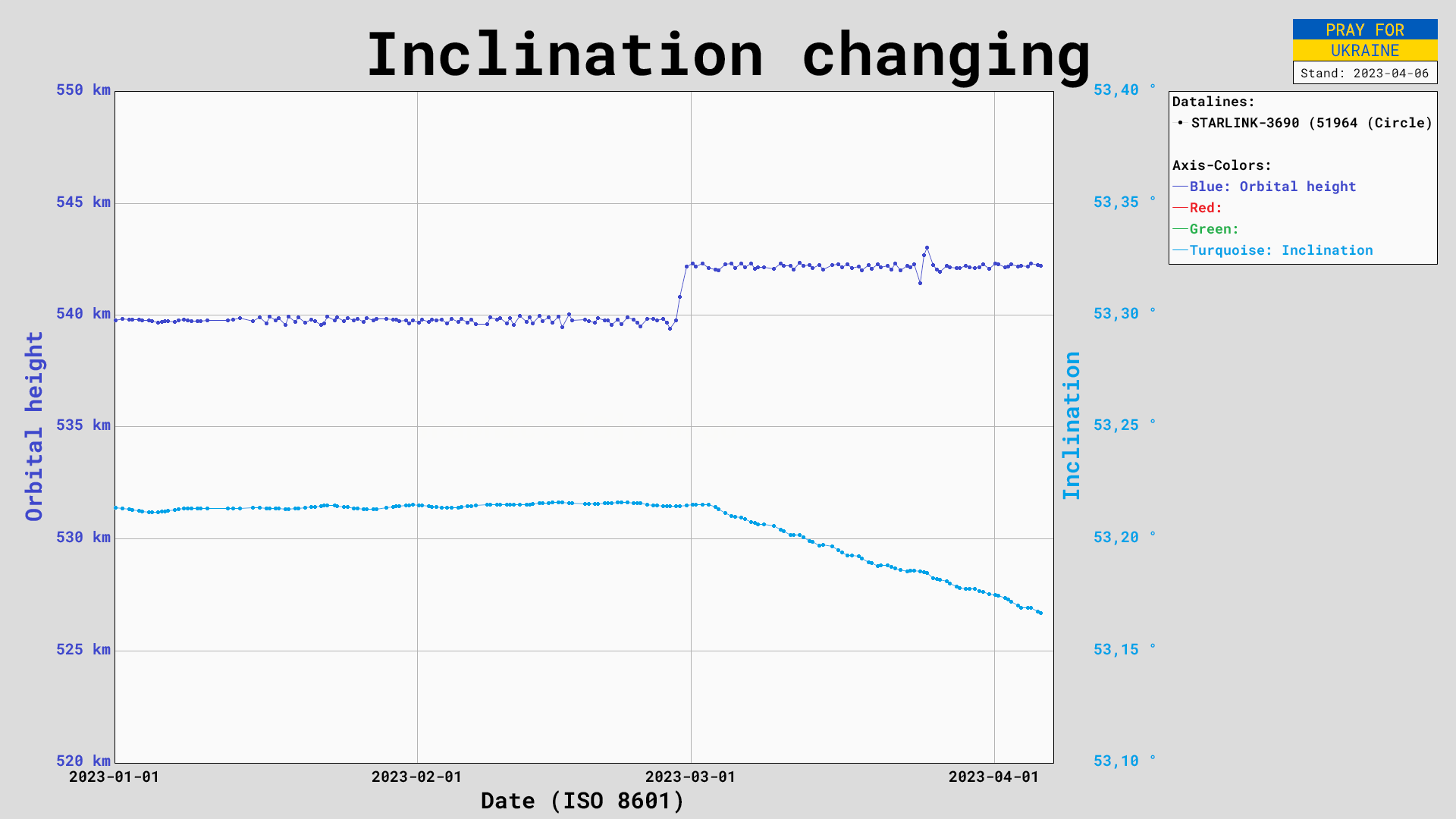 Highlight: Operating orbit 5
Highlight: Operating orbit 5At operational orbit 5, the first satellites have taken up their positions. According to the approval, there are to be 120 satellites per orbit, the first orbits were approached with 20-30 satellites in a grid for 60 satellites.
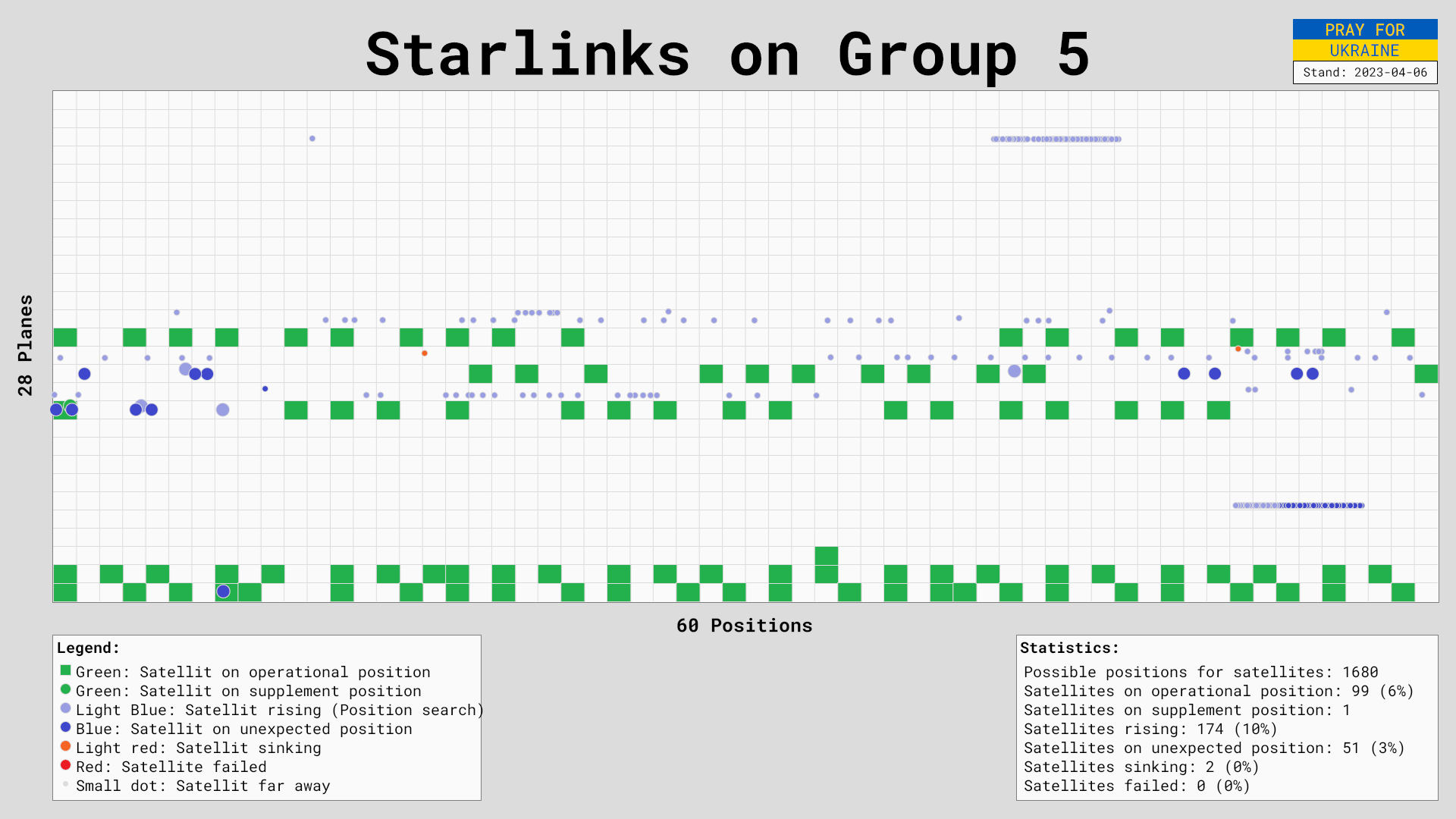
Highlight: Operating orbit 6The first V2.0 mini satellites on operational orbit 6 are in space. They have major problems:
- About 4 weeks after launch, only 3 satellites have managed to increase their orbit.
- 1 satellite has already deorbited.
- The rest are holding orbit, or passively sinking.
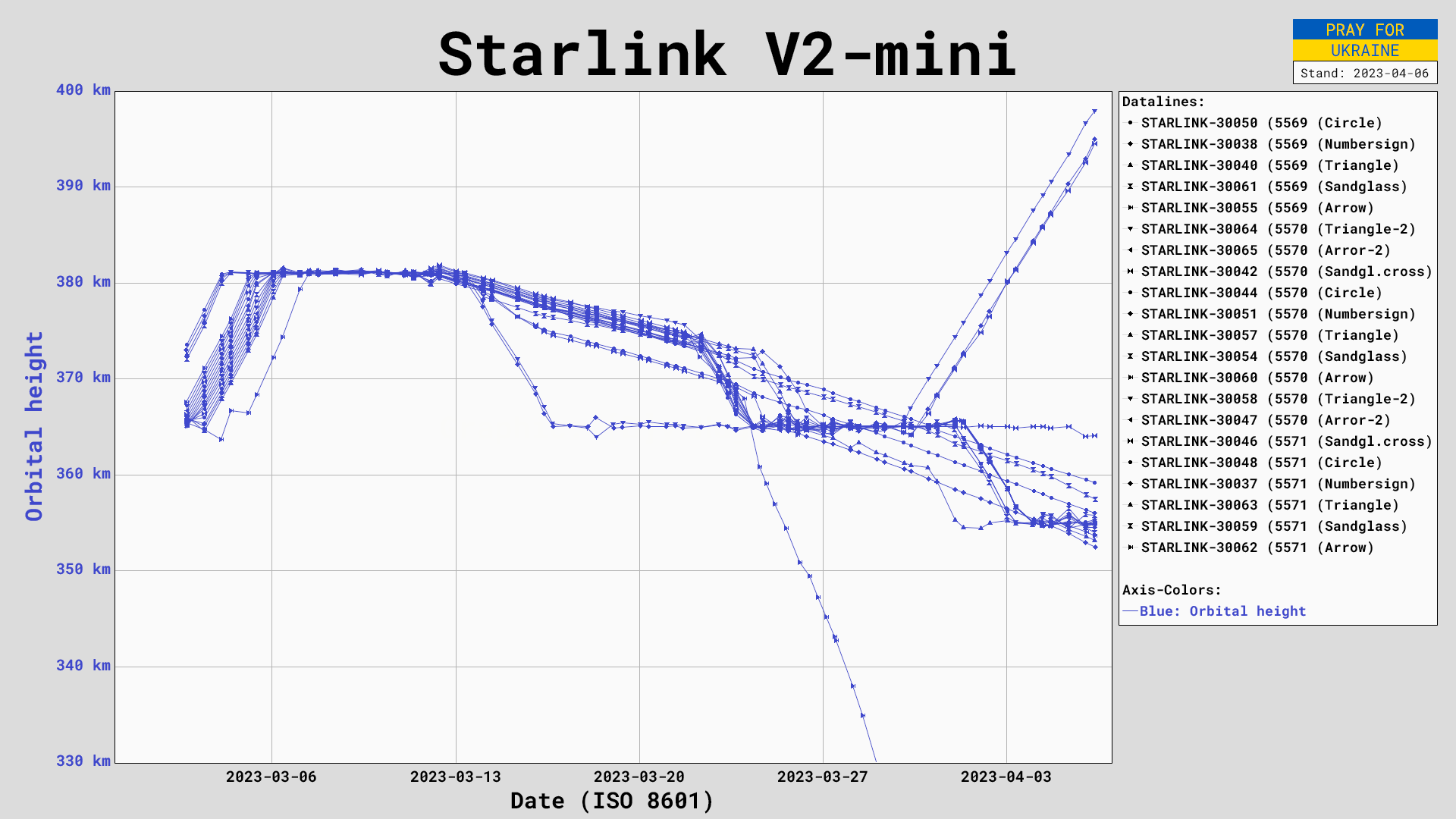
Details of the orbitsThe operational orbits each consist of 6 to 72 orbits with 18 to 120 operational positions occupied by the satellites.
Change detection operating orbitsStarting with the monthly report for March 2023, the operational orbits are assigned more precisely.
In the previous reports, for example, deorbit satellites were assigned blanketly to operational orbit 0.
Now they are correctly assigned to the correct operational orbits.
Selected defectsI have selected individual Starlinks for an overview of how quickly Starlinks deorbit, when they are defective and fail. If this happens after launching in space, they deorbit within a few weeks. However, if a satellite fails on the operational orbit, the deorbit correspondingly longer.

The latest rocket launchesIn the following diagram you can see the apogee in red, the perigee in green and the orbital altitude in blue for all Starlink launches of the last 8 weeks. Sometimes there are 1 or 2 satellites which do not activate their propulsion and deorbit after a few weeks.
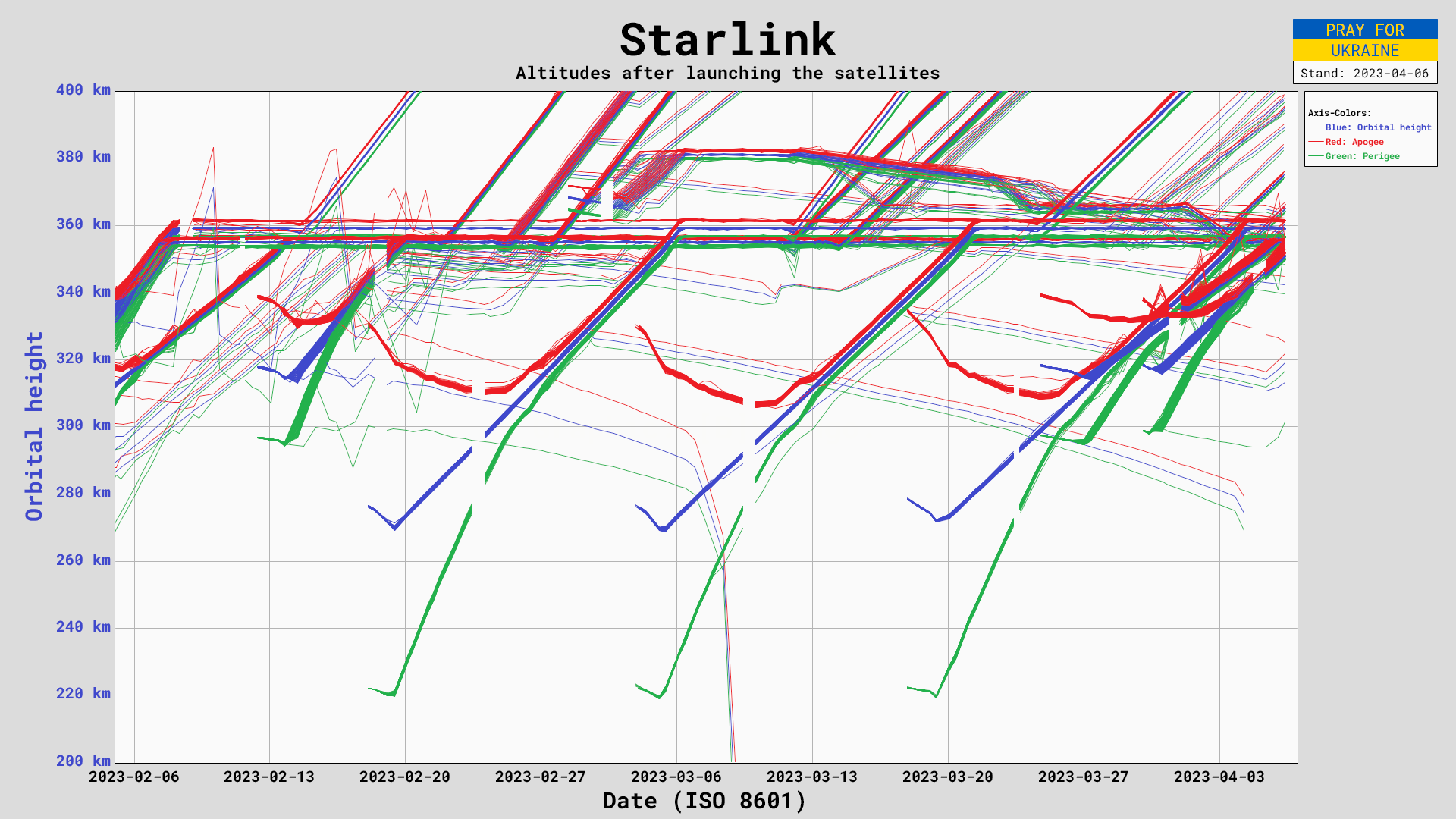
Satellite failuresIn some cases, the satellite engines fail completely and cannot be reactivated.
Satellite failuresIn part, the engines can also be reactivated.
